The Oodnadatta Track, South Australia
Oodnadatta track follows a traditional Aboriginal trading route along a line of natural mound springs feeding from the Great Artesian Basin – the same route taken by the explorer John McDouall Stuart on his third expedition in 1859, and that chosen for the Overland Telegraph Line and old Ghan railway line. Explore and learn on small group tour for couples and solo mature travellers on a small group tour into the Outback.
2 Mar 21 · 10 mins read

The Oodnadatta Track
By Marco Stojanovik
The Oodnadatta Track is one of the greatest outback tracks in Australia, an accessible and engaging 617km drive through the stunning desert plains of South Australia. Some 600 km north of Adelaide, the maintained unsealed road passes from Marree in the south-east to Marla in the north-west via Oodnadatta. It follows a traditional Aboriginal trading route along a line of natural mound springs feeding from the Great Artesian Basin – the same route taken by the explorer John McDouall Stuart on his third expedition in 1859, and that chosen for the Overland Telegraph Line and old Ghan railway line.
Remains of the telegraph line, Ghan route, and once bustling towns feature as highlights along the journey. These are accompanied by the natural sites of different landforms, plants and natural springs, as well as the spectacular Lake Eyre, the largest salt lake in Australia.
Odyssey Traveller visits these historic and natural sites during our small group tour of the Oodnadatta Track and Flinders Ranges. After travelling from Adelaide and through the Flinders Ranges, we journey along the entire Oodnadatta Track stopping to explore at Oodnadatta, William Creek, Lake Eyre National Park, Curdimurka and Marree. From here we continue on to the Arkaroola Wilderness Sanctuary, the Vulkathunha-Gammon Ranges National Park, and Wilpena Pound, before returning to Adelaide. This article explores the natural features, history, and highlights of the track to assist your tour.
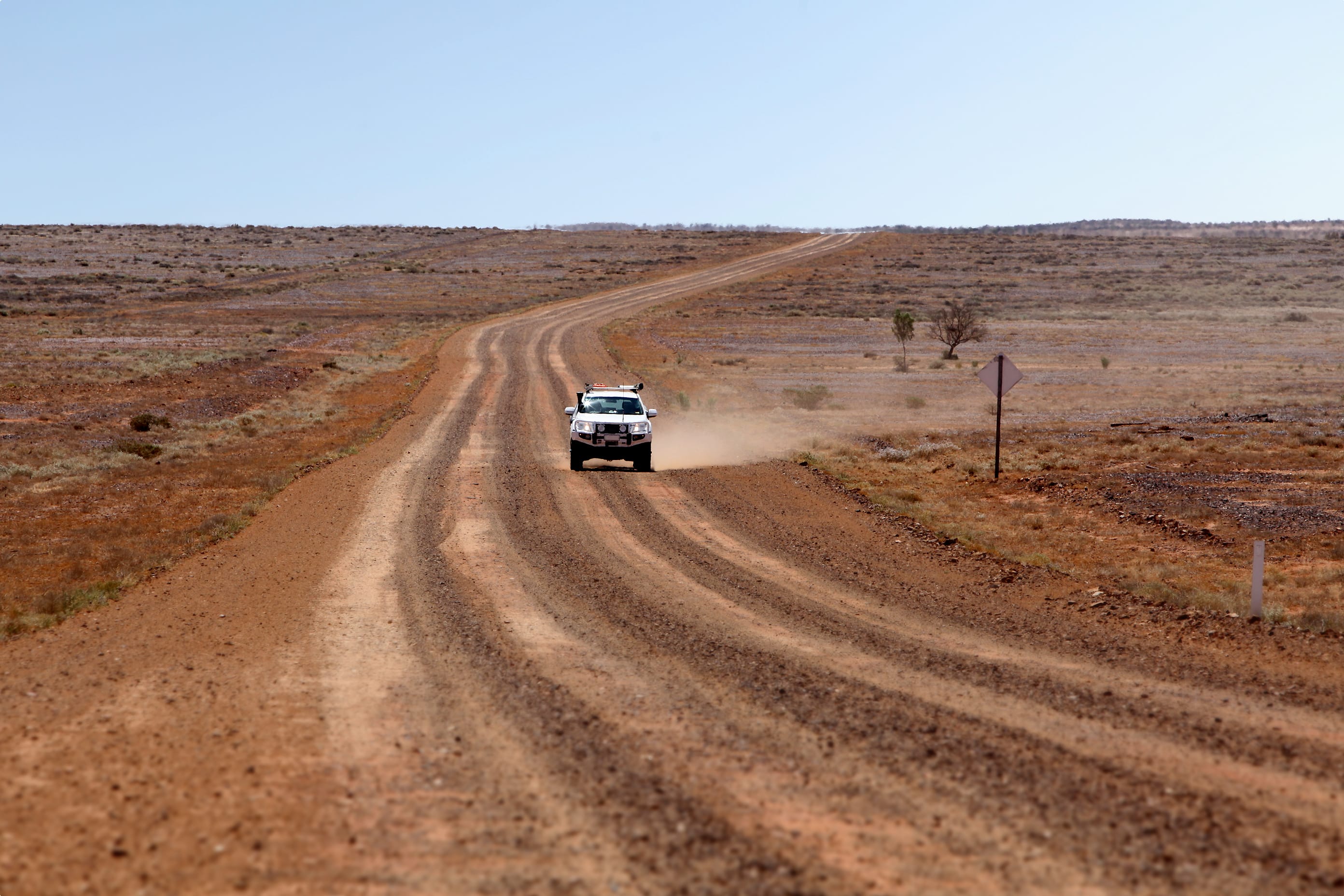
Great Artesian Basin
The desert scenery of the Oodnadatta Track may appear to visitors that they are journeying over waterless plains. Beneath them, however, lies one of the world’s largest aquifers – the Great Artesian Basin. This massive natural underground reservoir of water flows under nearly a fifth of the country, stretching over 1,700,000 square kilometres (660,000 sq mi), and provides the only source of fresh water through much of inland Australia.
It is along the edges of the Oodnadatta Track that the Basin squeezes to the surface in the form of numerous natural springs. These springs have been discharging water for at least one million years, providing oases for unique aquatic life forms in the driest parts of Australia. The huge diversity of wildlife they support include birds, fish and aquatic invertebrates, some of which are found nowhere else on earth.
There are almost 5000 individual spring vents in 169 spring groups within the South Australia part of the Great Artesain Basin. The largest group is the Dalhousie complex, in the state’s far north-east, made up of 148 separate springs.
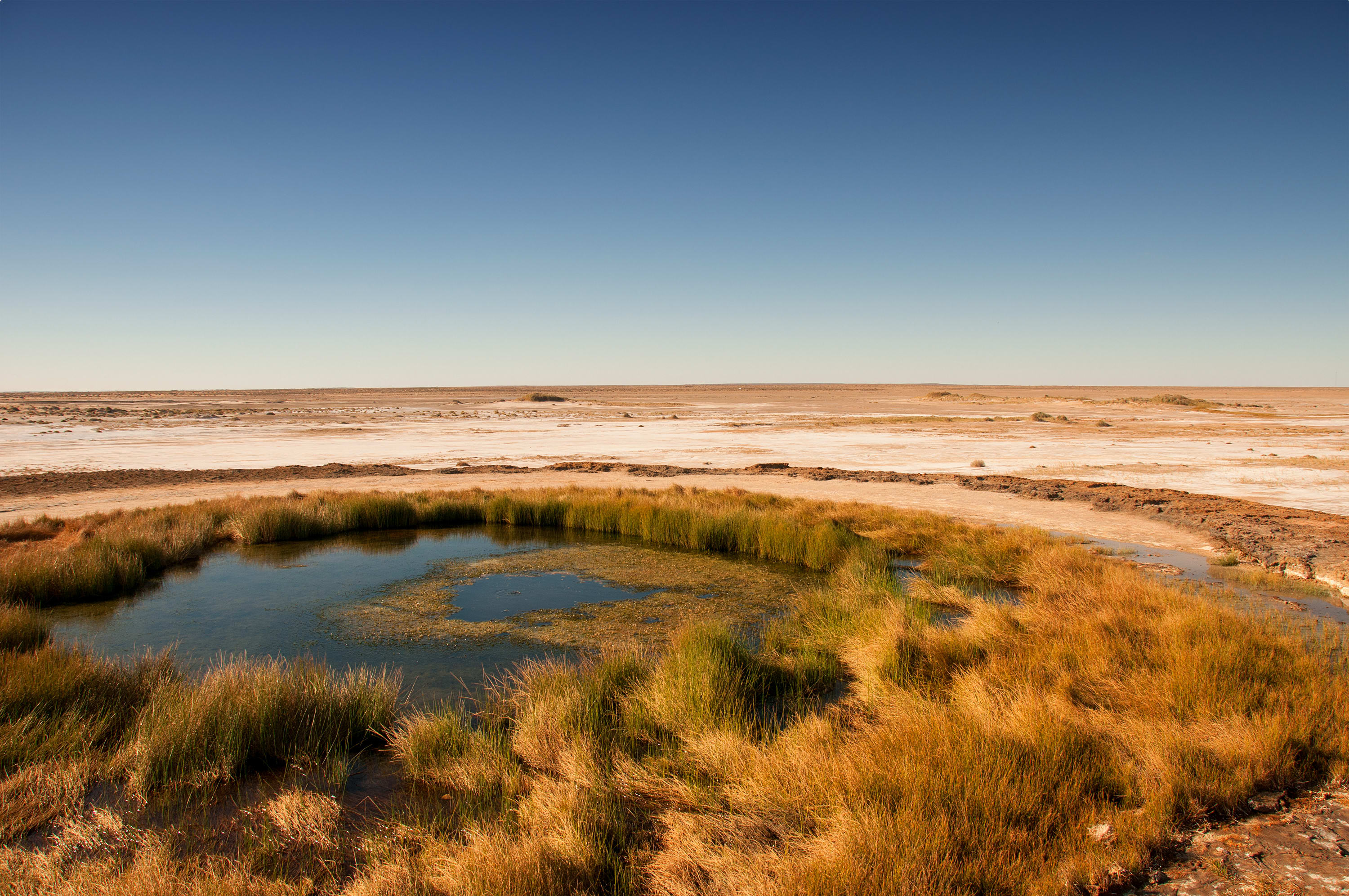
Many of the springs along the Oodnadatta Track are known as ‘mound springs’ because of the distinctive mounds that build up around them, standing above the surrounding flat salty landscape. These mounds are formed by mineralised material that comes to the surface with the water. Combined with the lush green reeds and other plants that grow around the spring, it makes for a truly spectacular landscape.
There are hundreds of mound springs along the Oodnadatta Track. The first of these to be seen by south-north travellers is the Hergott Springs just north of Maree. Other prominent ones are found at Callana Station, Finniss Springs, Warburton, Loudon Springs, and Wabma Kadarbu Mound Springs Conservation Park.
The mound spring at Wabma Kadarbu, also known as “the Bubbler”, is one of the most accessible and best known. Whereas many of the springs have a slow, seeping discharge, the Bubbler’s discharge rate is very high. A constant flow of bubbles pop to the surface of the water pool.

Landforms & Plants Along the Oodnadatta Track
Along the Oodnaddata Track are many different types of landforms, each supporting different vegetation. Floodouts and watercourses are common and in between are vast sand and gibber plains and tableland dotted with mesas.
The track passes through sand dune country in several places. Here the dominant features are dunes and flat areas between them known as swales. For the most part they are stable, with movement restricted to the crests. Several forms of vegetation can be found on them, such as the sandhill canegrass, sandhill wattle and horse mulga. These help to prevent movement of the sand.
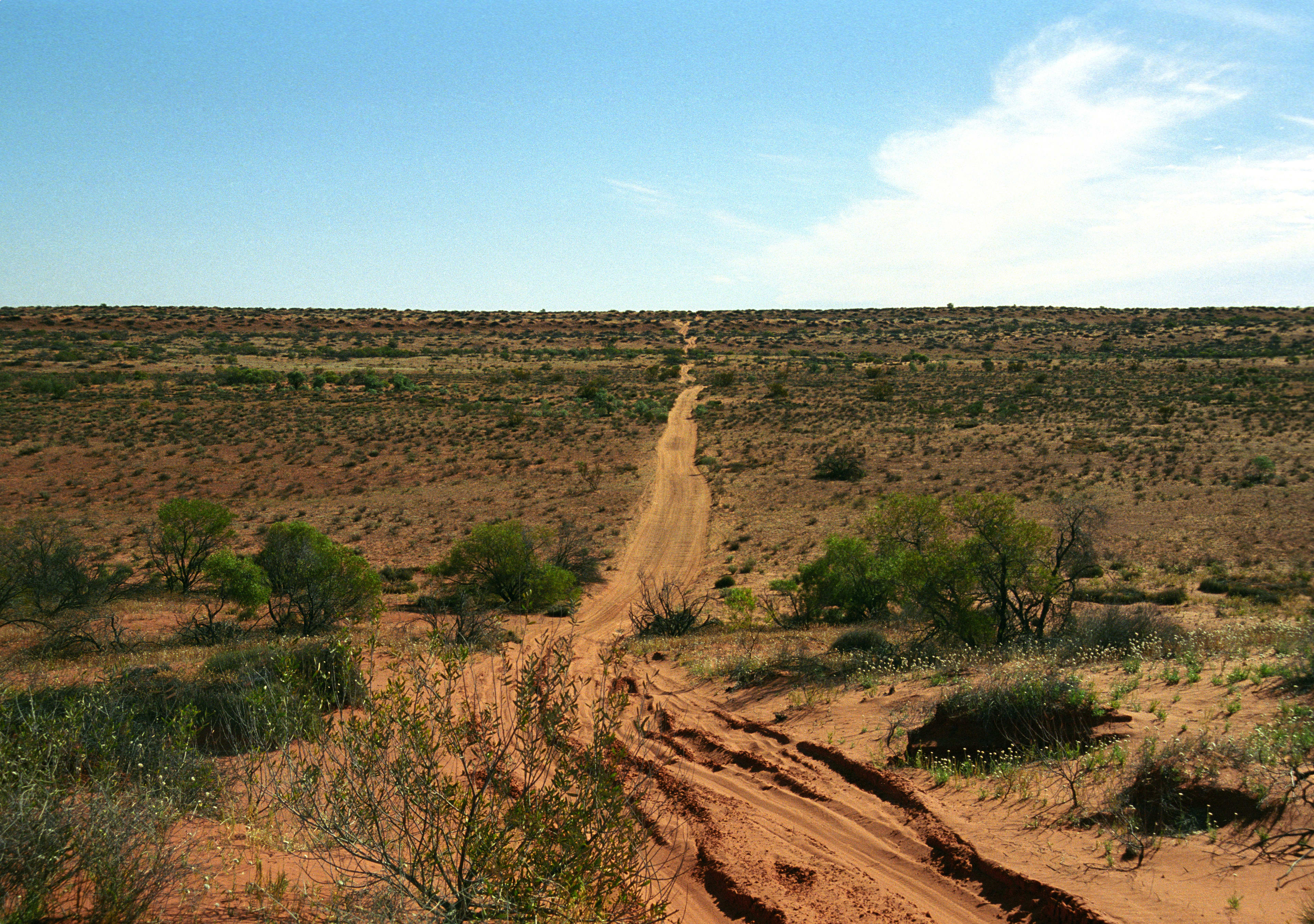
Often salt pans or claypans are contained with the swales between the dunes. Claypans fill with water following rains, providing fresh water and often swamp canegrass. Many salt likes are also located along the track, such as Lake William and Kati-thanda Lake Eyre (the largest of them all).
Gibber plains also fill the swales. These are stretches of country covered in small, polished rocks or pebbles called gibbers. These are the fragments of the original silcrete layer that capped the plain some 65 million years ago. Over the years, fine abrasive material has swept past, breaking down the layer during rain and wind scour. A purplish hue of gibber resting on the plains is the result. Shaped with concave faces and sharp edges, they stand as surface protection of the underlying soils from water and wind erosion.

The stony tablelands and isolated mesas found on the plains are the remnants of an ancient plain and indicate its original level. Further variations to the landscape include the Peake and Denison Ranges in the north and Willouran Ranges close to Maree, as well as several rocky outcrops at intervals along the track and the dramatic shapes of Hermite and Pigeon Hill at Bopeechee.
Much of the low vegetation seen along the track belong to the Chenopodiaceae family. These include saltbush (Atriplex), bluebush (Maireana), samphire (Tecticornia) species and bindyi (Sclerolaena) and buckbush, better known as roly poly or tumbleweed (Salsola kali).
In late autumn and winter stretches of the countryside are turned into spectacular landscapes of colour filled with different plants. Numerous varieties of annual flowers cover the dunes and sandy plains including yellow, white and pink daisies, the spectacular regal birdflower and the blue cattle bush. Summer rains meanwhile produce brilliant spreads of Sturt’s desert peat and Swainsona peas of orange, white, pink and purple hues.

History of the Oodnadatta Track
The Oodnadatta Track traverses over the traditional lands of three Aboriginal groups: the Kuyani people in the south between Lake Torrens and Kati Thanda-Lake Eyre; the Arabana people in most of the west of Kati Thanda-Lake Eyre; and the Arrernte people in the north (joined these days by many Antikirinya people traditionally from further west).
Knowledge of the numerous springs along today’s Oodnadatta Track has been passed down through generations of Aboriginal people since ancient times. They have long held significance for local Aboriginals as the only reliable permanent water sources in the arid outback – and many are regarded as sacred sites associated with the Dreamtime, used for important ceremonies.
The Oodnadatta Track itself follows the path of an ancient Aboriginal trading route that had been used for thousands of years. Traders hopped along the route from one spring to another, carrying ochre and other materials from the Flinders Ranges deep into Central Australia and back.
Aboriginal people would later share their knowledge to explorers and settlers, advising them: “It isn’t the straightest route, but it’s the only one if you want to survive”. John McDouall Stuart was one explorer especially apt to take on this advice, following the string of springs to become the first European to across Australia’s interior from south to north in 1859.

The route was then used for the construction of the Overland Telegraph Line with repeater stations located along the track. Completed in 1872, this allowed for the positions of faster communications between south-eastern Australia and Europe.
Because of the availability of water, the route was also chosen for the steam-train original Ghan Railway. From 1878, the railway was built by Afghan labourers and their camels who knew the desert conditions well and were able to work better than any others at that time. Once complete, this railway allowed hundreds of people access through the relatively unknown part of the country, opening up the Northern Territory for white settlement.
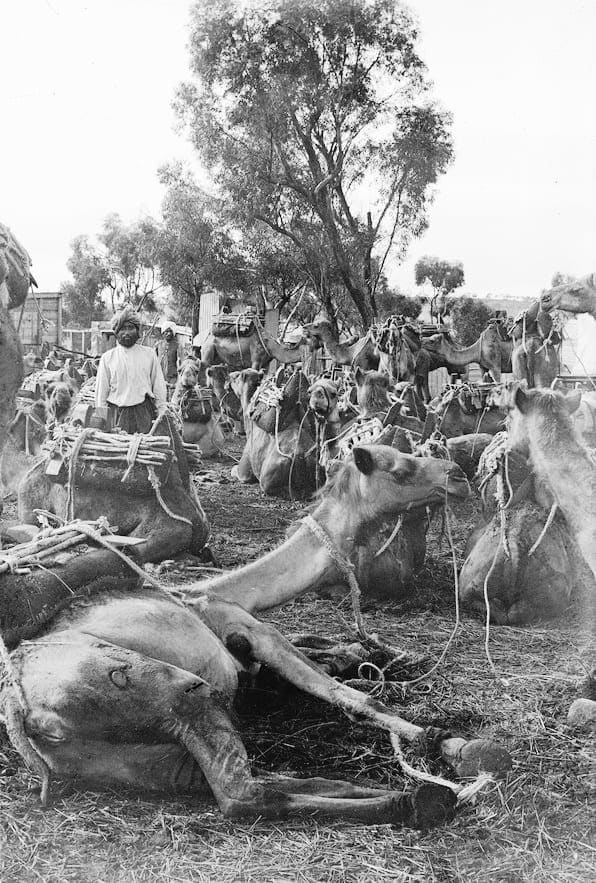
The Ghan Railway was moved to its current location in 1980, and many of the small towns along the original track abandoned. Remnants of the many railway sidings and the Overland telegraph repeater stations can still be found along the track today. Some of the best preserved are at the Coward Springs Campgrounds (complete with natural artesian spa), Curdimurka and the “Old Peake” ruins.
This has also historically been, and remains today, pastoral country. The first pastoral leases were established in this region in 1859 after the initial discovery of springs by white explorers. Many others soon followed, including those of the famous pastoralist Sidney Kidman, at stations such as Anna Creek along the string of springs.
In 1980, the track was officially named by Adam Plate of the Oodnadatta Progress Association to form a trilogy of unsealed tourist routes with the Birdsville Track and Strzelecki Track nearby.
Highlights of the Oodnadatta Track
Marree
For those travelling north, the Oodnatta Track starts off at the old railhead of Marree, which is also the beginning of the Birdsville Track. Marree is the end of the line for the rail from Port Augusta and the long journey from channel country for the cattle driven down the Katherine track. It was once a bustling centre of outback commerce, the most north railhead located at the crossroad of major overland trade routes.
During the late 19th century and early 20th century, Marree famously provided a home base for Afghan camel drivers or the ‘Afghans’ (cameleers from Afghanistan, British India, Iran, the Middle East and Egypt), who transported goods across outback Australia. Camel teams helped with the construction of the Overland Telegraph and railways, brought goods to Alice Springs, Broken Hill, and other places in central Australia, and carried wool to Adelaide and other coastal ports.
Today, the Marree region has a population of 634 (around 70% of whom are men), but the town proper only has a population of around 150. Major sites include the heritage Marree Hotel.Built in 1883, the Historic Maree Hotel is more than just a source of accommodation, but a place of living history. Delve into Marree’s past in the hotel’s two museums, devoted to John McDouall Stuart and Tom Kruse, mailman on the Birdsville Track up to Birdsville and subject of the award-winning 1954 documentary, The Back of Beyond.
Other sites in Marree include a reconstructed mosque, in the ‘bough shed’ style of the original, and the Museum Park, which most memorably displays Kruse’s mail truck. Marree is also home to the world’s largest piece of art, the ‘Marree Man’, a giant figure of a man carved into a plateau outside of town. No one knows how or by whom this figure was created. Thanks to its scale, the full figure can only be seen via a scenic flight.

Curdimurka Railway Siding
A number of abandoned small towns and railway sidings sit along the track from Marree, The Curdimurka Siding is a particularly fascinating spot, holding a long history as a key location on the old Overland Telegraph Line from and the original Ghan Railway.
The Curdirmurka siding remains intact and the railways building, desalination plant, water tower, fetters cottages, and Stuart Creek Bridge are all still standing in reasonable condition dominating the flat landscape. There are still rail lines too as well as a never-ending line of scattered remains of both telegraph and track.
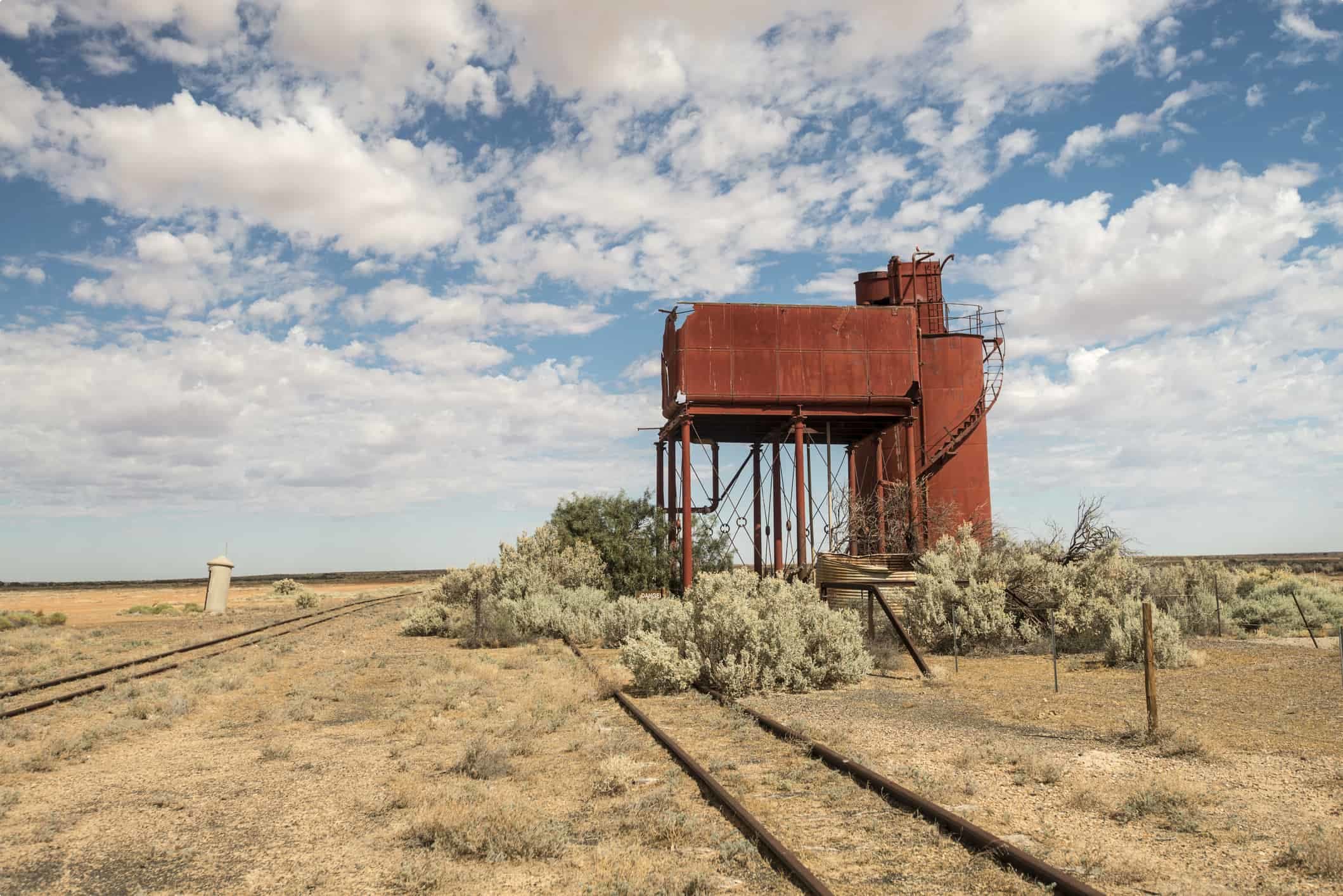
Lake Eyre
The Oodnadatta Track also passes the spectacular Lake Eyre, or Kati Thanda as it is known by local indigenous people. The largest salt lake in South Australia, it covers an area of 11,000 square km. It also boasts the reputation as the lowest point on the continent as -12m (-30 ft) below sea level.
Viewed from the ground the horizon line is seemingly never-ending. Only with a scenic flight over the lake can one understand the vast size of the lake system, putting it into perspective within the surrounding national park and Australian outback, as the landscape rolls away underneath.
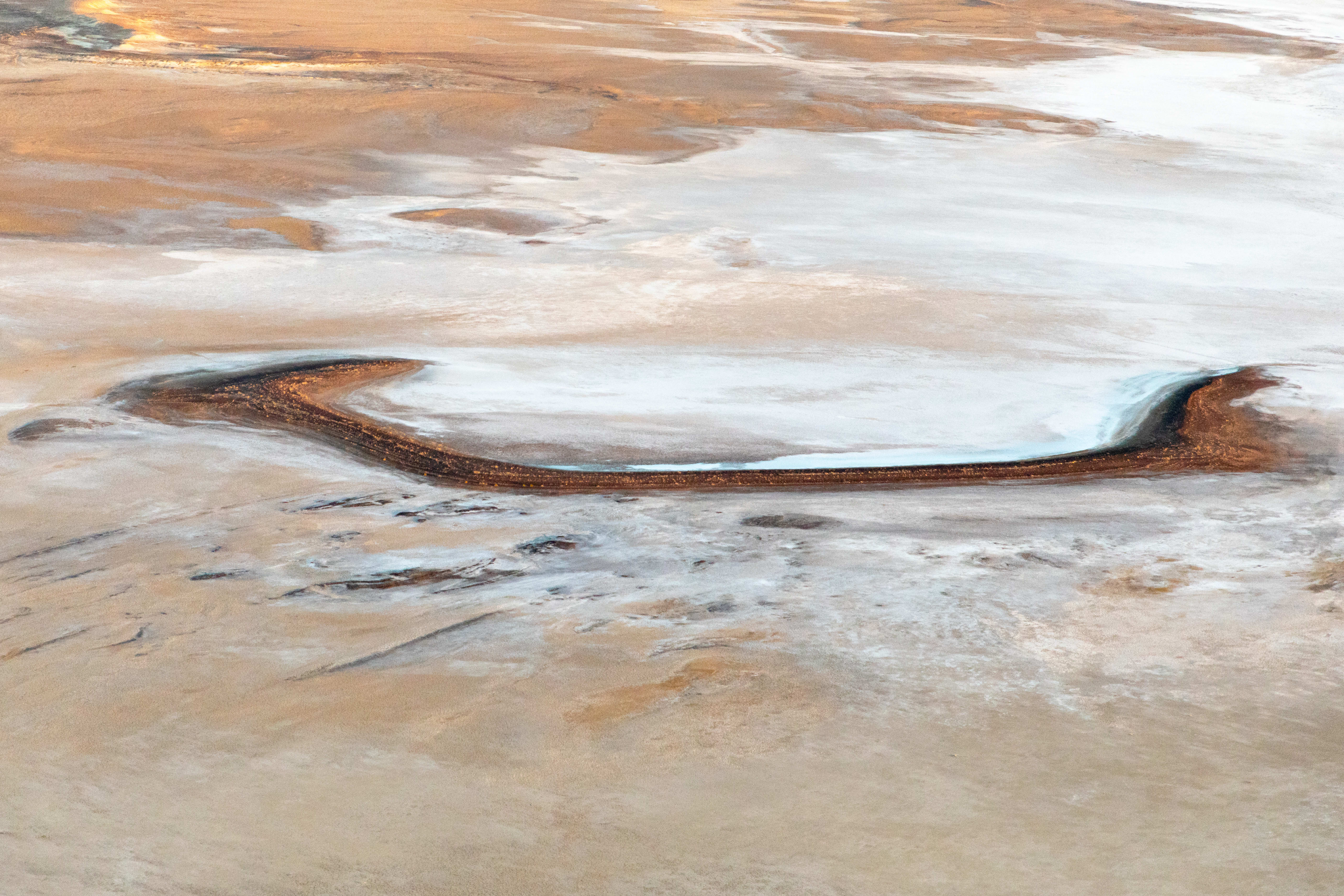
Oodnadatta
The remote namesake town of Oodnadatta has a big history as a trading stop and railway town for the Old Ghan. As South Australia’s most northerly railway town, it was the starting point for travellers heading to the Northern Territory, and a major railhead for cattle.
By 1893 there were some 50 Afghans based at Oodnadatta working 400 camels in every direction from the town. A Chinese community also flourished, setting up market gardens at Hookey’s Hole on the Neales River.
Today it is a quiet place, on the edge of the Simpson Desert. But with a population of just over 200, it is still a proper town with most services. Most alluring is the Pink Roadhouse, a busy focal point for travellers, offering food, accommodation, and advice.
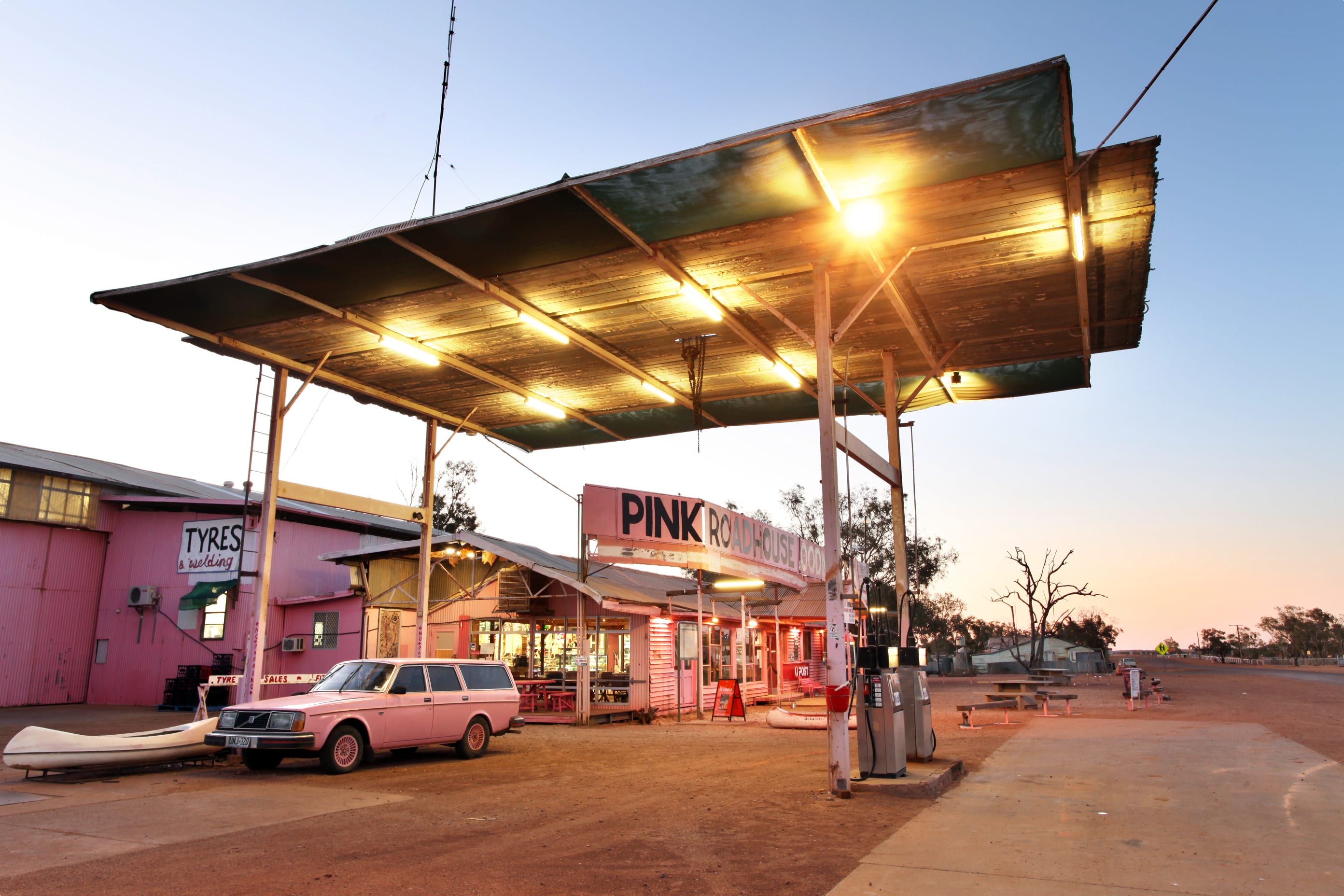
Tour of the Oodnadatta Track
Odyssey Traveller is pleased to announce our 18 day small group tour of the Oodnadatta Track and Flinders Ranges. This Australian outback adventure takes you to the well-known sights along the Oodnadatta track including Curdiminka and Farina, as well as an in-depth tour of the majestic Flinders Ranges – Wilpena Pound and Flinders Ranges National Park – but also to lesser-known gems, including Brachina Gorge, Parachilna Gorge, Bunyeroo Gorge, which we see and explore on a collection of day trips.
Our small group Australian Outback tour allows you to see and explore the ancient Flinders Ranges landscape – more than 600 million years old. We learn about the Aboriginal culture and history, dating back 60,000 years, and reflect on the history of European settlement in the 18th and 19th centuries along the way at Oodnadatta, William Creek, and Marree, as well as the ghost towns of Curdimurka and Farina where the legendary stockman Stanley Kidman brought his cattle out from the Channel country. We also see a diversity of abundant natural wildlife all in their natural habitat or South Australia’s extraordinary vast ancient landscape.
Articles about Australia published by Odyssey Traveller:
- The Kimberley: A Definitive Guide
- Uncovering the Ancient History of Aboriginal Australia
- Aboriginal Land Use in the Mallee
- Understanding Aboriginal Aquaculture
- Mallee and Mulga: Two Iconic and Typically Inland Australian Plant Communities (By Dr. Sandy Scott).
- The Australian Outback: A Definitive Guide
For all the articles Odyssey Traveller has published for mature aged and senior travellers, click through on this link.
External articles to assist you on your visit to the Oodnadatta Track and the Flinders Ranges:
Related Tours
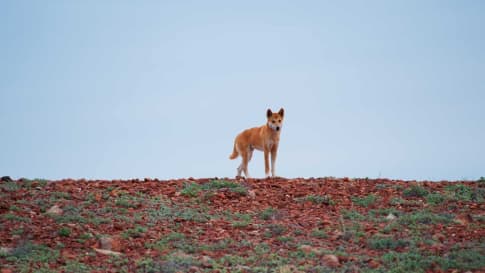
days
Apr, May, Jul, Aug, Oct +2Small group tour of Australia's Flinders ranges
Visiting South Australia
Escorted small group tour of the Flinders range in South Australia from Adelaide. Learn about Coober Pedy, Wilpena pound and water system of Lake Eyre as we explore and learn also about the history of the people who explored the Flinders.

days
Feb, Mar, Apr, May, Jul +2Small group Motorcycle tour of South Australia
Visiting South Australia
Escorted small group tour for senior motorcycle riders of the Flinders range in South Australia from Adelaide. Learn about Coober Pedy, Wilpena pound and water system of Lake Eyre as we explore and learn also about the history of the people who explored the Flinders.
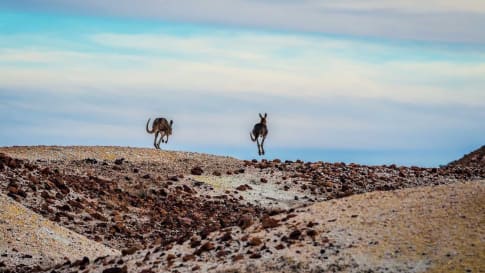
13 days
Mar, OctSmall group tour; Broken Hill and back
Visiting New South Wales, Queensland
Small group tour of New South Wales, Queensland & South Australia deserts, from Broken Hill. Learn about the history of the people who explored the deserts, from indigenous communities to Europeans, as well as Burke and Wills, visit White Cliffs, Birdsville, Maree.
From A$11,550 AUD
View Tour
days
Feb, Apr, May, Jun, Jul +3Small group Motorcycle tours; Broken Hill and back
Visiting New South Wales
Small group tour of New South Wales, Queensland & South Australia deserts, from Broken Hill. Learn about the history of the people who explored the deserts, from indigenous communities to Europeans, as well as Burke and Wills, visit White Cliffs, Birdsville, Marree. Explore the outback by motorbike limited to 8 riders.
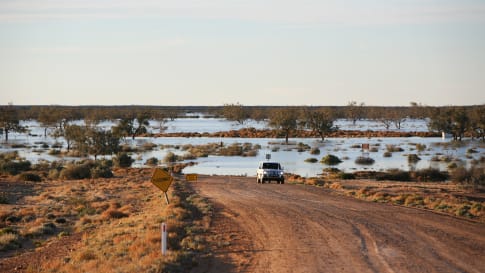
65 days
MarLong tour of Australia for a small group
Visiting New South Wales, Northern Territory
Small group tour for senior couples and solo travellers touring Australia. Travelling through the outback and visiting many of the famous sights as well as off the beaten track locations. Learn about the history of the people who explored the deserts, from indigenous communities to Europeans, as well as Burke and Wills, visit White Cliffs, Marree and far north Kakadu and the Kimberley.
From A$48,995 AUD
View Tour
15 days
Sep, Dec, Jan, Feb, Mar +2Eyre & Yorke Peninsulas, and the Gawler Ranges
Visiting South Australia
Small group tour South Australia. Yorke, Eyre, and Gawler Ranges, discover the local history.
From A$10,350 AUD
View TourArticles about the Oodnadatta track

Aboriginal culture of the Flinders Ranges, South Australia
The iconic Flinders Ranges of South Australia have a rich Aboriginal heritage and are home to a number of vitally important cultural sites and ancient artworks that this small group tour for mature and senior travellers has the opportunity its to learn about.

Aboriginal Songlines
Songlines trace the journeys of ancestral spirits who created the land and all natural phenomena. The creation stories as well as practical knowledge needed for survival in outback Australia. We experience this knowledge on our small group tours into Outback Australia.
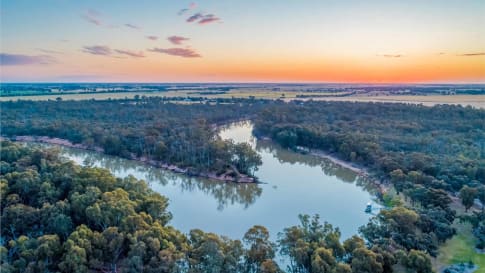
Appreciating Australian River Systems
Appreciating the linking of the river network into the Australian, history, culture and landscape on a small group tour for mature and senior travellers of couples or solo travellers is an integral part of understanding the continent of Australia and Aboriginal settlement.
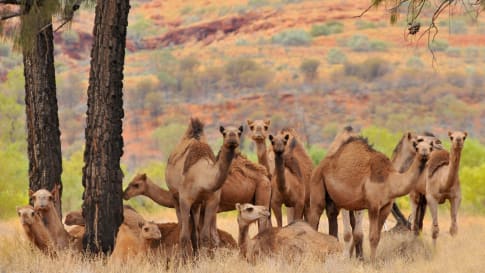
Camels of the Australian Outback
Camels of the Australian Outback Here’s a trivia question : where are the world’s only wild single-hump (dromedary camel) camels found? If you guessed Arabia or the Sahara, you’d be wrong. In fact, the answer…

Coober Pedy, South Australia
The town of Coober Pedy was established in 1915, when a 14-year old boy found a precious opal in a remote part of the South Australian outback. On this small group tour of the Flinders ranges we explore and learn about this and other towns in the Flinders and its importance to the Aboriginal community.

Curdimurka, South Australia
Curdimurka, a place explored from another time. The Ghan historically ran until the mid 1970's past Curdimurka. Learn more on the Oodnadatta and Flinders small group tour for mature and senior travellers couple or solo travelers.

Expeditions of John McDouall Stuart in the Flinders.
John Stuart was an explorer who mapped the Flinders ranges as well as a path through the centre of Australia. The principal road from Port Augusta to Darwin is the Stuart Highway. The Small group tour of the Flinders ranges spends time learning about Stuart.

Farina, South Australia
Farina, a ghost town where stockman Stanley Kidman drove his cattle through channel country. Mature and senior travellers explore on small group tour for couples and solo travellers on the Oodnadatta and Flinders tour here and Lake Eyre, Marree and much more through to Flinders ranges.

Flinders Ranges National Parks, South Australia
Rugged mountains, tree-lined gorges, an abundance of wildlife, and important Aboriginal works : the national parks of the iconic Flinders Ranges including Wilpena pound are the beginning of Australia's outback that we explore on a small group tour for mature travellers.

Marree and the Railway Track, South Australia
Learn more about the importance of this outback town in the settlement of Australia. Visited as part of our small group package tours for mature and senior travellers, couples or singles this is a town with history close to the Birdsville track and the Oodnadatta track.

Oodnadatta, South Australia
Oodnadatta is an adaptation of an Arrernte word utnadata meaning 'blossom of the malga'. This town was part of a network of Aboriginal trading routes existing for tens of thousands of years. Learn and discover more on a small group tour of the Flinders ranges.

The Arrival of Aboriginal Australians on the Continent
Tracing Aboriginal history via an outback small group tour for mature and senior couples or solo travellers provides an intriguing learning platform about Australia, rock art, trading and culture that traces a history possibly some 120,000 years ago.

The Australian Outback: A Definitive Guide
Explore learn and consider what is the outback in this article. For mature and senior travelers considering joining a small group package tours into the outback to see, learn and explore about this unique place, not only the landscape but the Aboriginal approach to living. On each of the tours for couples and the single traveler you learn something different but fascinating, from Outback Queensland, the Flinders, Broken Hill and the Kimberley and the wildflowers all contribute to this question, what is the outback?

The Australian Overland Telegraph Line
Article on the Australian Overland Telegraph Line, that connected Port Augusta with Darwin and thereby Australia overseas to England and the wider world. Learn more on a small group tour for senior and mature couples and solo travellers visiting Central Australia including Uluru-Tjtuta.

Woomera, South Australia
Read and learn about the contemporary history of this military site and town in South Australia. We visit briefly on the Flinders range tour of South Australia that began in Adelaide. Odyssey has a collection of small group package tours for mature and senior travellers, couples or singles that explore the landscape, wildlife and history of Australia to enjoy.



